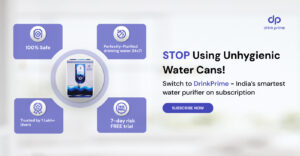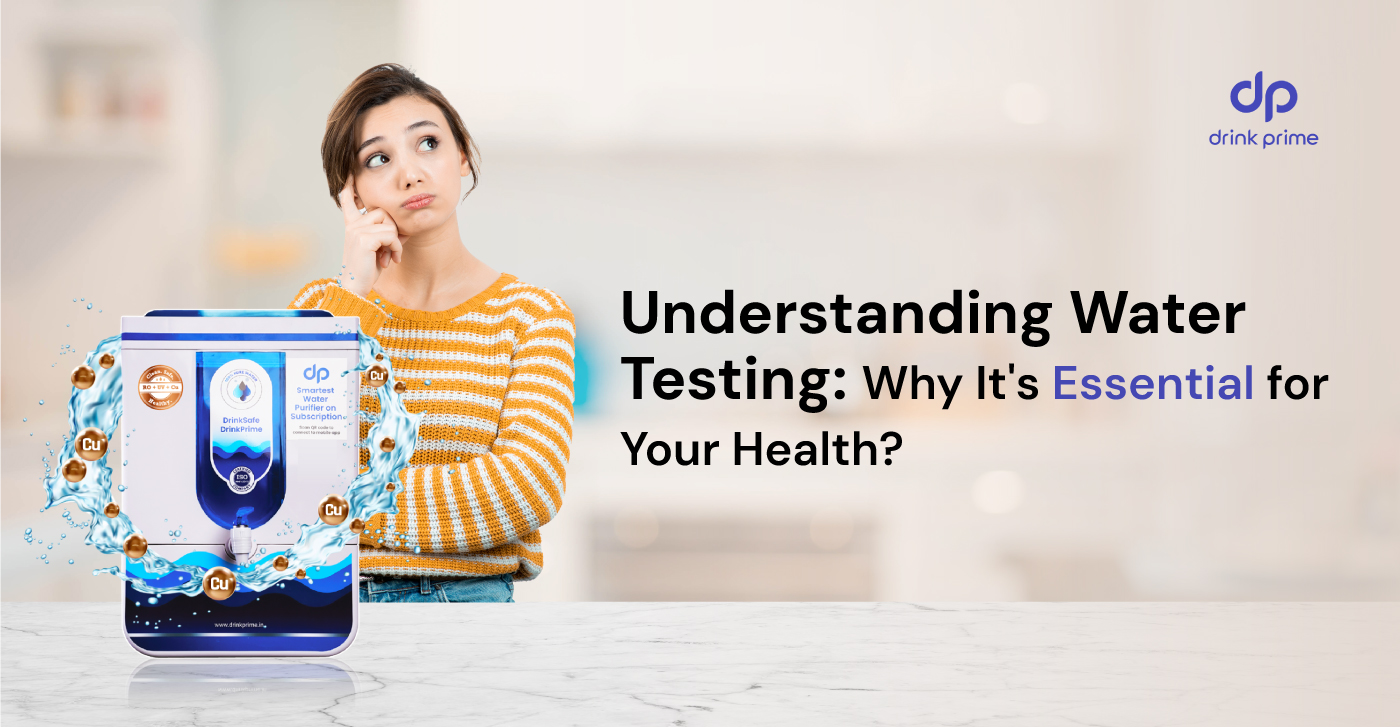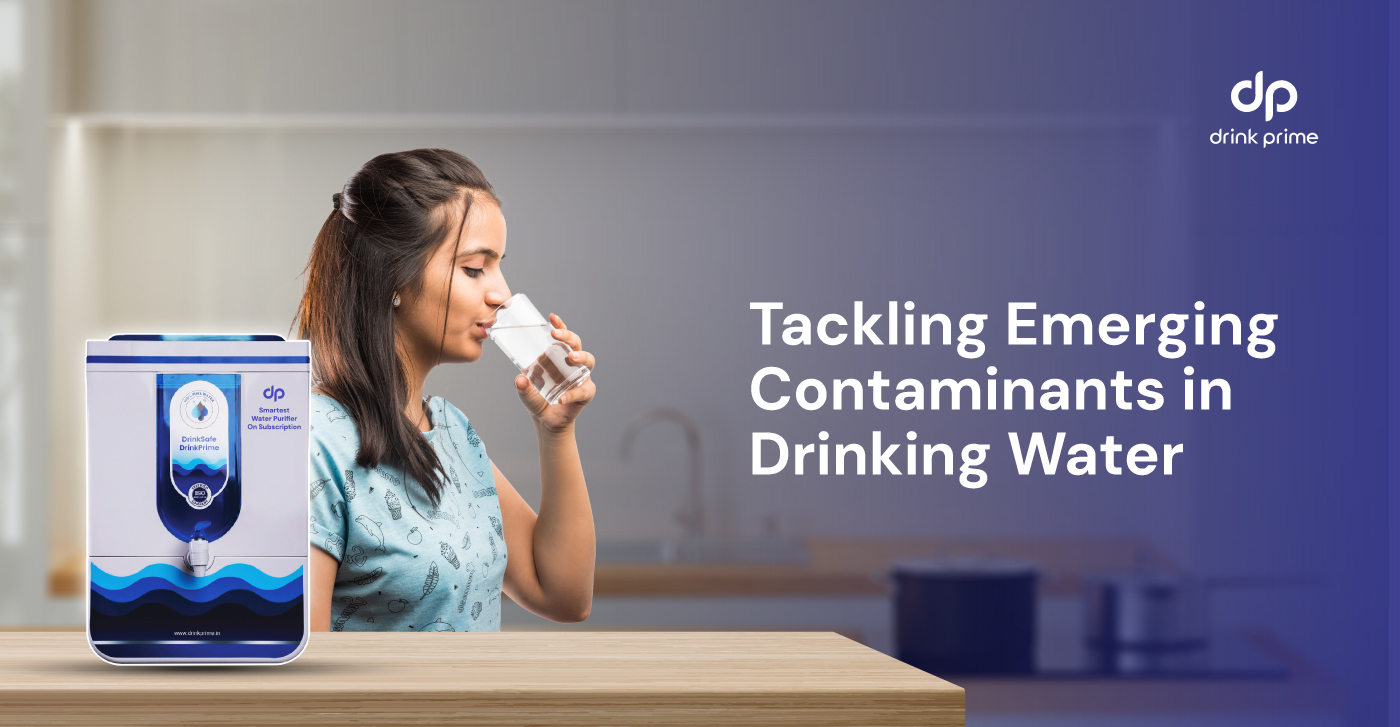Having clean water is really important for staying healthy, but having too many heavy metals in the water can be a big problem. These metals, which occur naturally, can cause serious health issues when there’s too much of them. It’s crucial to understand what kinds of heavy metals are in the water and to use effective methods to get rid of them to keep communities healthy. Prolonged exposure to metals like lead and mercury can lead to health problems, so it’s really important to take action. Making sure people have access to clean water is a key part of keeping communities around the world healthy and strong
Types of heavy metals in drinking water
Different types of heavy metals can be in the water we drink, and having too much of them can be bad for our health. Here are some common ones
Lead
This comes from pipes and plumbing, and it’s a harmful metal, especially for kids’ development.
Mercury
It gets into water from industries and can cause problems with our nerves, especially in babies and young kids.
Cadmium
Comes from factories and farms, and too much exposure can hurt our kidneys and might cause certain cancers.
Arsenic
Found naturally in some underground water, arsenic can lead to skin issues, problems with growing up, and different kinds of cancers.
Chromium
Comes from factories, and if we breathe it in or eat it over a long time, it can cause health issues like lung cancer.
Copper
A little copper is okay, but too much from old pipes can lead to stomach problems.
Zinc
Like copper, too much zinc from pipe corrosion can cause stomach issues.
Nickel
Often comes from factories, and being exposed to nickel can cause problems with breathing and skin irritation.
Why should we remove heavy metals from drinking water?
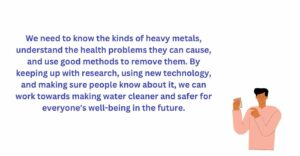
Getting rid of heavy metals from drinking water is really important because these metals can make us sick. Here’s why it matters:
1. Health Issues
Even if there’s just a little bit of heavy metals, it can seriously hurt our health. Being around metals like lead, mercury, cadmium, and arsenic for a long time can cause problems with how we grow, damage our organs, and make us more likely to get certain types of cancer.
2. Kids’ Health
Kids can get sick more easily from heavy metals. For example, being around lead can slow down how kids grow, make them less smart, and even affect how they behave. Making sure kids are safe from these problems is really important when it comes to water.
3. The buildup of Problems
Some heavy metals can build up in our bodies over time, causing big health problems. This means it’s really important to stop these metals from being in our water for a long time.
4. Following Rules
Governments and health groups set rules about how much of these metals is okay in drinking water. Making sure we follow these rules is a must to keep everyone healthy and safe.
5. Stopping Long-Term Diseases
Being around certain heavy metals has been linked to long-term diseases like heart issues, problems with our nerves, and trouble breathing. Taking out these metals from drinking water helps stop these diseases from happening.
6. Keeping Communities Healthy
Having clean water is something everyone should have. Removing heavy metals ensures that not only is water easy to get, but it’s also safe and won’t make people in our communities sick over time.
So, eliminating heavy metals from drinking water isn’t just about following rules; it’s about keeping everyone, especially kids, healthy and making sure our communities stay strong.
How to Effectively Remove Heavy Metals from Drinking Water?
It’s really important to get rid of heavy metals in drinking water to keep it safe and protect everyone’s health. There are different ways to do this:
1. Coagulation-Flocculation
How it works: We add chemicals to water to make tiny particles stick together, and then we remove these clumps.
Targets: Good for removing metals like arsenic, lead, and chromium.
2. Ion Exchange
How it works: We swap heavy metal ions in water with different ions on a special material.
Targets: Works well for removing metals like lead, cadmium, and copper.
3. Reverse Osmosis
How it works: We push water through a special membrane that removes contaminants, including heavy metals.
Targets: Works for a lot of different heavy metals, making sure they’re all taken out.
4. Activated Carbon Filtration
How it works: Water goes through activated carbon that sticks to and traps heavy metals.
Targets: Good for removing metals like mercury, lead, and cadmium.
5. Electrodialysis
How it works: Special membranes with electricity help heavy metal ions move through, separating them from water.
Targets: Useful for metals like chromium, copper, and nickel.
6. Biological Treatment
How it works: Certain tiny organisms absorb or change heavy metals, reducing their amount in water.
Targets: Effective for metals like selenium, chromium, and cadmium.
7. Distillation
How it works: We heat water, turn it into steam, and then cool it down to remove contaminants, leaving heavy metals behind.
Targets: Good for a wide range of heavy metals.
To make sure these methods work well, we need to think about things like water quality, the types and amounts of heavy metals, and the rules set by local authorities. Regular testing helps us check if the chosen method is working and if the water meets safety standards. Using a combination of these methods based on the specific water source can create a complete and reliable solution for getting rid of heavy metals from drinking water.
Get 7 Days Risk Free Trial
Conclusion
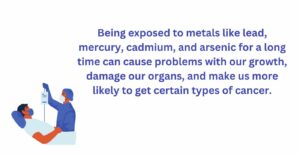
To sum up, it’s really important to deal with heavy metals in drinking water to keep everyone healthy. We need to know the kinds of heavy metals, understand the health problems they can cause, and use good methods to remove them. By keeping up with research, using new technology, and making sure people know about it, we can work towards making water cleaner and safer for everyone’s well-being in the future.

